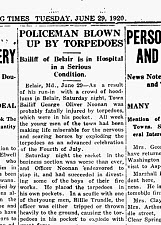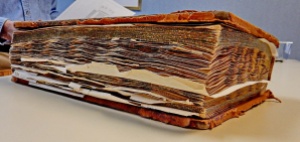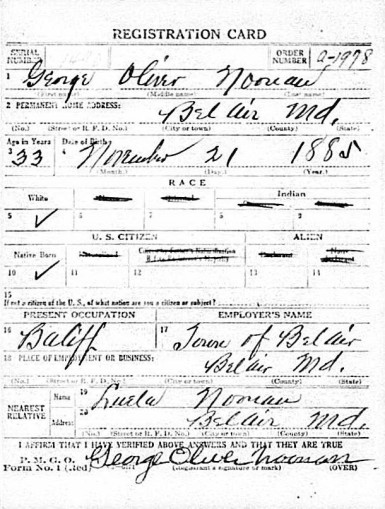
Occasionally while researching some criminal justice history matter I find a hint in old records about a long forgotten, undocumented fallen police officer. When that happens, I pick up the evidentiary fragments and trace the trail back through time to make sure the officer’s ultimate sacrifice isn’t forgotten in the mist of time.
Over the decades I have found officers in Wilmington, Clayton, and Crisfield who fell in the line of duty, but were never listed on national, state, or local memorials or remembered in their community. When the tragic occurrence is pointed out and the facts around the incident have been gathered, an officer or retiree from the department usually picks it up from there, making sure the hero is honored and the sacrifice is remembered by the agency and the community.
A few months ago while working on an investigation, I happened across some records about a Bel Air, MD police officer falling in the line of duty in 1920. So today I picked up those fading traces, doing some fieldwork in Harford County.
Here is the narrative on this tragic occurrence:

A group of rowdies were making “life miserable for Bel Air’s quieter citizens by bombarding the town with torpedoes at all hours of the day and night” in the summer of 1920, according to the Aegis. These wayward types had grown so daring as to toss firecrackers beneath the feet of ladies, causing them to stay clear of downtown streets. All week-long these “hoodlums” had been making life difficult “for the nervous and scaring horses by exploding the torpedoes as an advanced celebration of the Fourth of July,” the Gettysburg Times remarked.
On Saturday night the racket in the business section was worse than ever so the town officer, Bailiff George Oliver Noonan, prepared to crackdown and bring a halt to the booming blasts of high-powered firecrackers. But things reached a climax that weekend as he butted heads with the ruffians.
The disruptive gang had purchased“ a generous supply of torpedoes,” and were using them when the officer confronted the rowdies on June 26. When he warned them to stop igniting firecrackers, someone lit the fuse on one and dashed it down at his feet. So he “divested some of the boys of their fireworks,” placing the torpedoes in his pocket. But at least one of the revelers wasn’t happy with that and so Bailiff Noonan arrested Billie Trundle. Trundle resisted and in the scuffle, the officer was either “tripped or thrown heavily to the ground,” causing the torpedoes to explode with terrible force, the Midland Journal reported.
His clothing was torn to shreds and the officer was seriously burned and bruised. He stumbled into Richardson’s pharmacy where Dr. Charles Richardson determined that his injuries were serious. By Sunday he was failing, and a consulting physician, Dr. Charles Bagley, ordered immediate admission to the Church Home and Infirmary in Baltimore. In the hospital he steadily grew worse, until Monday night when death occurred (June 28, 1920).
Mr. Noonan was 34 years of age and died “from injuries sustained while making an arrest.” newspapers reported. He was survived by a widow, formerly Miss Lulua Carr. Funeral services were held at his residence and interment was in the Quaker Cemetery at Broad Creek. He had been bailiff for several years and was regarded as an excellent and hardworking officer, the Gettysburg Times reported.
At a meeting of the Bel Air Town Council on June 30, 1920, the town took action to replace their loyal and dedicated officer, the minutes reading: “Mr. Paul H. Carroll was appointed bailiff to succeed Oliver Noonan, deceased.” At the next meeting, Mr. Carroll declined the position and Samuel S. James was appointed Bailiff.
Additional Photos about Bel Air Police Officer George Noonan

